[2007] 1 SLR(R) 629 - Singapore Law
[2007] 1 SLR(R) 629 - Singapore Law
[2007] 1 SLR(R) 629 - Singapore Law
You also want an ePaper? Increase the reach of your titles
YUMPU automatically turns print PDFs into web optimized ePapers that Google loves.
646 SINGAPORE LAW REPORTS (REISSUE) [<strong>2007</strong>] 1 <strong>SLR</strong>(R)<br />
within its territorial scope of application or in the context of articles 8<br />
and 36.<br />
3. However, the second part of the provision is addressed only to<br />
the courts of State X and declares their measures to be compatible with<br />
an arbitration agreement irrespective of the place of arbitration.<br />
Assuming wide adherence to the model law, these two parts of the<br />
provision would supplement each other and go a long way towards<br />
global recognition of the principle of compatibility, which, in the<br />
context of the 1958 New York Convention, has not been uniformly<br />
accepted.<br />
33 The purpose of Art 9 is clear. It is to declare the compatibility between<br />
arbitrating the substantive dispute and seeking assistance from the courts<br />
for interim protective measures. For this reason, Art 9 can have no bearing<br />
on the meaning and effect of a domestic law providing for interim<br />
measures, such as s 12(7) of the IAA. It can neither subtract nor add to the<br />
meaning and effect of s 12(7) which has to be determined by reference to its<br />
own language and structure, as well as any other relevant extrinsic matters.<br />
We will now examine these matters.<br />
34 As we have stated earlier, the two judges disagree on the scope of<br />
s 12(7). Prakash J was not persuaded that it was intended to assist foreign<br />
arbitration. Ang J was convinced that it was so intended as there is nothing<br />
in s 5(2) of the IAA which limits the definition of “international<br />
arbitration” to arbitrations with their seat of arbitration in <strong>Singapore</strong>. We<br />
will now examine the respective merits of the two interpretations and set<br />
out our own judgment on these matters.<br />
The purpose of the IAA – why, when and how section 12(7) was enacted<br />
35 In our view, the key to unlocking the true meaning of s 12(7) is to<br />
examine the history of why, when and how s 12(7) came to be enacted.<br />
Prakash J has alluded to this point in her judgment, but she did not<br />
elaborate on or pursue it. Counsel for Magnifica has provided us a great<br />
deal of preparatory and legislative materials to guide us in this search. The<br />
first noteworthy point is that sub-s (7) (then sub-s (6)), when it was<br />
enacted, was inserted as the last subsection of s 12. Unlike the preceding<br />
sub-ss (1) to (5), sub-s (7) was not part of the original s 12. In our opinion,<br />
this is a significant factor in the search of its original intent. We have<br />
mentioned earlier that the original Bill was submitted to the LRC for its<br />
consideration, and later revised by the inclusion of, inter alia, s 12(7) (then<br />
s 12(6)). The Committee has provided an explanatory note on the revisions<br />
called “Supplementary Note on Bill” (“the Note”). The Note highlighted<br />
three main changes to the original Bill, one of which was the inclusion of<br />
sub-s (7). Paragraph 4(c) of the Note provides the explanation for the<br />
inclusion as follows:


![[2007] 1 SLR(R) 629 - Singapore Law](https://img.yumpu.com/7082457/18/500x640/2007-1-slrr-629-singapore-law.jpg)
![[2011] 1 SLR 727 - Singapore Law](https://img.yumpu.com/51140774/1/166x260/2011-1-slr-727-singapore-law.jpg?quality=85)
![[1983-1984] SLR(R) 447 - Artic Builders & Co - Singapore Law](https://img.yumpu.com/50909204/1/164x260/1983-1984-slrr-447-artic-builders-co-singapore-law.jpg?quality=85)
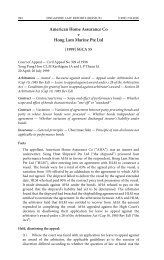
![[1996] 2 SLR(R) 292 - Lim Eng Hock Peter v ... - Singapore Law](https://img.yumpu.com/47482222/1/164x260/1996-2-slrr-292-lim-eng-hock-peter-v-singapore-law.jpg?quality=85)

![[2006] 1 SLR(R) 197 - PT Asuransi Jasa Indonesia - Singapore Law](https://img.yumpu.com/46425352/1/164x260/2006-1-slrr-197-pt-asuransi-jasa-indonesia-singapore-law.jpg?quality=85)
![[1985-1986] SLR(R) 503 - Woh Hup (Pte) - Singapore Law](https://img.yumpu.com/45676364/1/164x260/1985-1986-slrr-503-woh-hup-pte-singapore-law.jpg?quality=85)
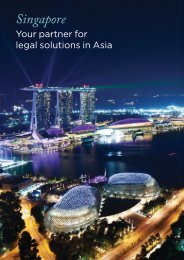
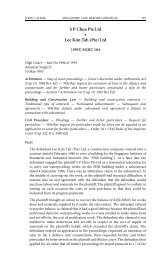
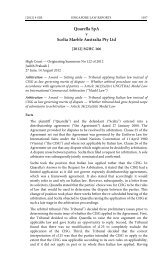
![[2010] 2 SLR 821 - Singapore Law](https://img.yumpu.com/43145563/1/166x260/2010-2-slr-821-singapore-law.jpg?quality=85)
![[2007] 1 SLR(R) 597 - PT Asuransi Jasa Indonesia - Singapore Law](https://img.yumpu.com/42983489/1/164x260/2007-1-slrr-597-pt-asuransi-jasa-indonesia-singapore-law.jpg?quality=85)
![[1989] 1 SLR(R) 433 - Singapore Law](https://img.yumpu.com/42649524/1/164x260/1989-1-slrr-433-singapore-law.jpg?quality=85)
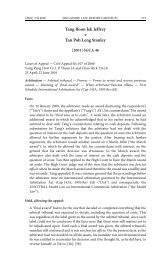
![[1997] 3 SLR(R) 360 - Singapore Law](https://img.yumpu.com/42287507/1/164x260/1997-3-slrr-360-singapore-law.jpg?quality=85)